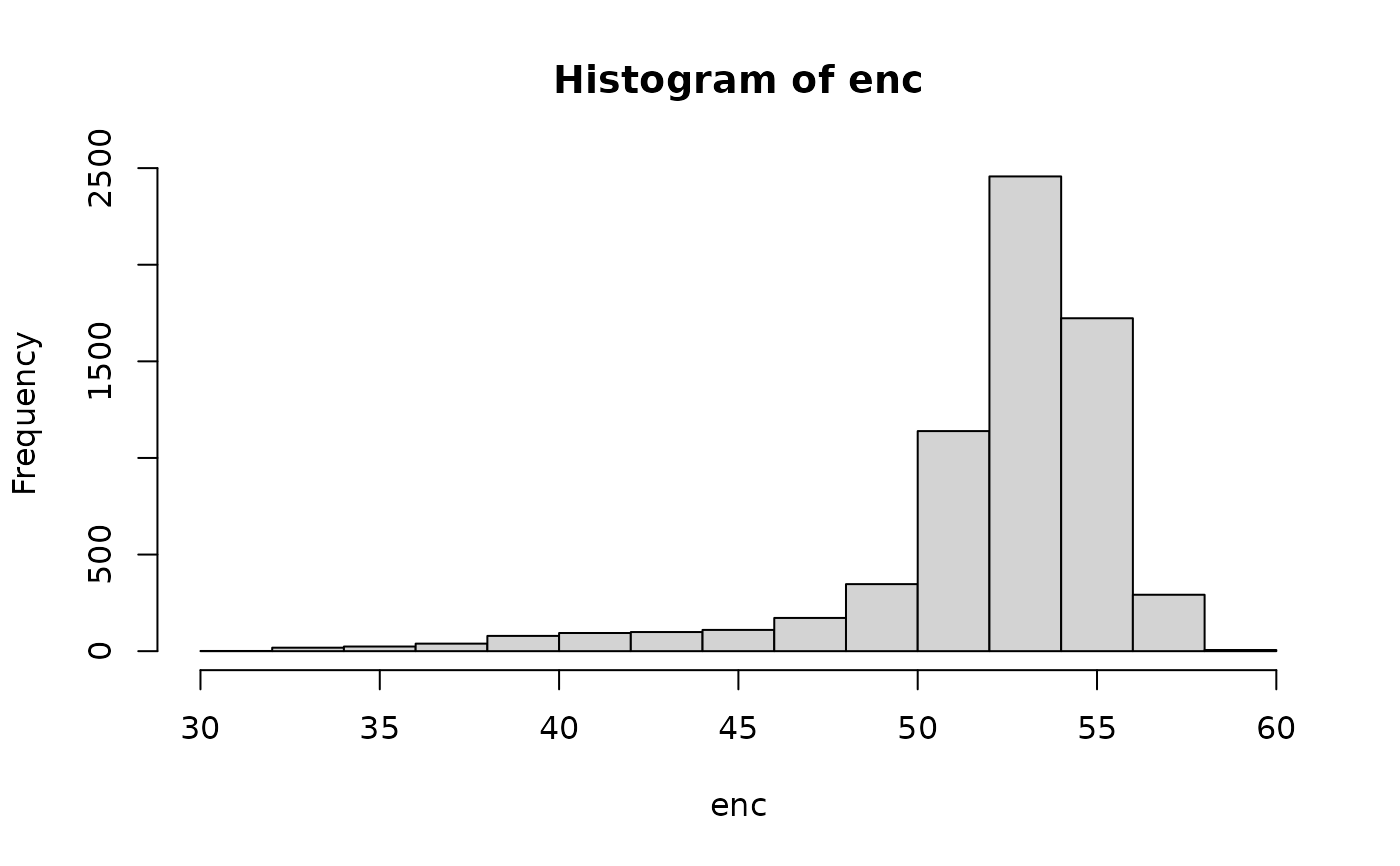get_enc computes the effective number of codons (ENC) for each coding
sequence, which quantifies the degree of codon usage bias. Lower ENC values
indicate stronger bias (fewer codons are used), while higher values indicate
more uniform codon usage.
Usage
get_enc(cf, codon_table = get_codon_table(), level = "subfam")Arguments
- cf
A matrix of codon frequencies as calculated by
count_codons(). Rows represent sequences and columns represent codons.- codon_table
A codon table defining the genetic code, derived from
get_codon_table()orcreate_codon_table().- level
Character string specifying the analysis level: "subfam" (default, analyzes codon subfamilies) or "amino_acid" (analyzes at amino acid level).
Value
A named numeric vector of ENC values. Names correspond to sequence identifiers from the input matrix. ENC values typically range from 20 (maximum bias) to 61 (uniform usage).
References
Wright F. 1990. The 'effective number of codons' used in a gene. Gene 87:23-29.
Sun X, Yang Q, Xia X. 2013. An improved implementation of effective number of codons (NC). Mol Biol Evol 30:191-196.
Examples
# Calculate ENC for yeast genes
cf_all <- count_codons(yeast_cds)
enc <- get_enc(cf_all)
head(enc)
#> YPL071C YLL050C YMR172W YOR185C YLL032C YBR225W
#> 52.93616 44.57694 56.03833 50.82037 53.34254 53.85807
hist(enc, main = "Distribution of ENC values")
